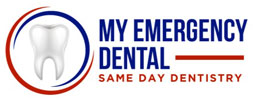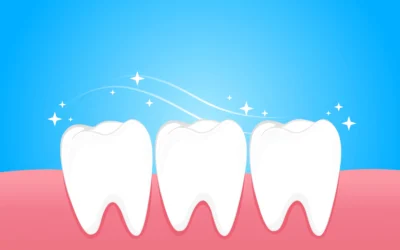Suffering dental trauma, such as a knocked-out tooth, can be both painful and distressing. However, a silver lining is that there are well-established processes in place that can help people to deal with their injuries.
This article will examine the symptoms, causes, and appropriate treatment for dealing with dental injuries. Whether you or someone you know has suffered a fractured, dislodged, or knocked-out tooth, this article can guide you on how to manage the incident safely.
It is critical that you see a dentist immediately after an incident of dental trauma takes place. It is recommended that you visit an emergency dentist within 1 hour, especially in the case of lost teeth or a fractured tooth.
For an emergency dentist specializing in dental trauma, visit My Emergency Dental in the greater Atlanta area.
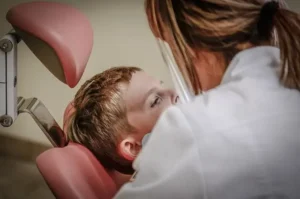
Overview
Dental trauma refers to dental injuries such as damage to the teeth, gums, and surrounding oral structures. There are many different forms of dental trauma, and they can range in their level of severity. Patients can also suffer from related health problems that may go unnoticed in the immediate aftermath of an incident.
What is dental trauma?
Dental trauma is a broad term referring to injuries that affect the oral cavity. It can range from minor injuries, such as chipped or cracked teeth, to more severe conditions like an avulsed tooth, which is the complete displacement of the tooth from the socket. Dental injuries are treated slightly differently for permanent teeth when compared to a child’s primary teeth, as a missing tooth for an adult would not be naturally replaced by the body.
Dental traumas are commonly caused by incidents that involve direct force to the face, such as sports injuries, motor accidents, or sudden falls. As a result of the nature of these incidents, dental trauma can sometimes involve a fracture to the jawbone or other related injuries. However, dental trauma primarily refers to damage to teeth and the soft tissue in the mouth.
For both primary and permanent teeth, emergency dentists are available for the management of traumatic dental injuries.
Is dental trauma a common injury?
A knocked-out tooth or partial tooth fracture accounts for 5% of all injuries to adults and more than 17% of all injuries to children of preschool age.
While dental injuries are most common in children aged 7 to 11, it can affect people of all ages. In total, more than 5 million Americans suffer the most extreme form of dental trauma every year — that is, a completely avulsed tooth.
Having a tooth knocked out is certainly more common than many people might think, and emergency dental practices have well-established procedures in place to deal with dental trauma as a result.
What are the different types of dental trauma?
There are several main types of dental trauma:
- Fractured or chipped teeth
- Tooth avulsion (knocked-out tooth)
- Tooth luxation (displacement within the mouth)
- Root fractures
Each form of dental trauma comes with its own set of challenges, but there are established emergency procedures in place that can treat the injury effectively.
Symptoms and causes
Symptoms of dental trauma can include mouth pain and bleeding from the gums. In the case of tooth avulsion (where a tooth gets knocked out completely), there will likely also be a hole in the gum where the tooth used to be.
The causes of dental trauma can be diverse. While dental trauma, such as a knocked-out tooth, is often associated with accidental injury, it can also be the result of underlying health problems or even orthodontic treatments in some cases.
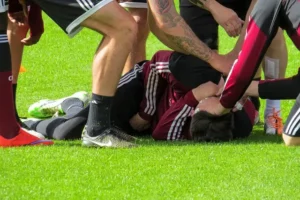
What are the most common causes of traumatic dental injuries?
Knowing the most common causes of dental trauma can be particularly useful when seeking to prevent nasty injuries, so this section will explore the most common incidents that lead to dental trauma in more depth.
Sports Injuries
Participation in contact sports without proper protective gear increases the risk of dental injury. Impact from a ball, collision with another player, or a fall during sports can involve injury, and it’s one of the most common causes of damage to the teeth.
When it comes to sports injuries, here’s a recent story from our dental practice:
“One patient came into the office straight from a basketball game. He was not wearing a mouthguard while playing and said that an opposing team member elbowed him in the face by accident and knocked out his tooth.
The patient picked it up off the ground and came straight to My Emergency Dental. Luckily, the tooth was completely intact — the root was still attached to the tooth instead of a broken tooth where the root remains in the gum.
We were able to put the tooth back in place successfully on the same day as the incident occurred.”
— Dr. Burke, DMD, My Emergency Dental
Accidental falls
Accidental falls are frequent causes of dental injuries. Landing face-first or with direct impact on the mouth can lead to injuries in the oral cavity, including tooth avulsion, tooth luxation, and partially fractured teeth.
Motor vehicle accidents
Car accidents and other motor vehicle collisions can result in significant facial trauma, impacting the teeth and surrounding structures. Despite the extensive safety features that are in place in modern automobiles, any forceful impact on the face can cause chipped or fractured teeth.
Physical altercations or violence
Physical altercations between friends or foes can lead to dental injuries. This is one of the most common causes of tooth avulsion. Punches, kicks, and blows to the face can result in injured teeth as well as soft tissue injuries around the oral cavity.
Chewing on hard objects
Using teeth to open packets or biting on hard objects like ice, pens, or unpopped popcorn kernels can cause dental trauma. While this is one of the most common causes of dental trauma, it’s also one of the most avoidable — a conscious change to a person’s habits can help to avoid any injuries to the teeth, mouth, or gums.
Bruxism (teeth grinding)
Chronic teeth grinding, known as bruxism, can contribute to dental trauma. The constant friction associated with grinding can weaken the teeth over time. This makes fractures, chips, or enamel damage much more common among people who suffer from bruxism.
Accidental bites
Biting down with excessive force and meeting unexpected resistance can result in dental injuries. This is most common while chewing, as people sometimes bite into utensils or other hard objects by mistake.
Orthodontic treatment
Certain orthodontic treatments can contribute to dental trauma, particularly when it comes to treatments that involve braces. The wires and brackets that are used in this kind of treatment may cause injuries to the soft tissues of the mouth — however, this is rarer than other causes of dental trauma.
Osteoporosis and aging
Conditions such as osteoporosis, which weakens the bones, can increase the risk of dental injuries taking place. This is especially common in people of older age groups. Osteoporosis causes decreased bone density, which may make teeth more susceptible to fractures.
Treating dental trauma
Prompt and appropriate care is crucial when dealing with dental trauma to minimize the long-term impact on oral health. Seeking emergency dental attention, especially in cases of knocked-out teeth, increases the chances of successful treatment.
However, dental trauma can be self-treated to a certain extent. While it may not be possible to fully recover the tooth in the absence of an emergency dentist, some steps can be taken by an individual that will help manage dental trauma after an incident.
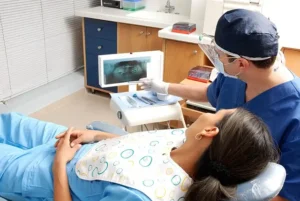
How to deal with dental trauma: What should you do if your tooth gets knocked out of its socket?
Dealing with tooth avulsion involves three key stages: before you visit the emergency dentist, during your visit, and after your visit.
Here are the best practices you should take if you or someone you know has suffered tooth avulsion.
Before you visit the emergency dentist
It’s important to take action as soon as the incident takes place. Time is of the essence when dealing with dental trauma — you should aim to follow the initial best practices and seek emergency care within 1 hour of an incident. This can make all the difference when it comes to reattaching the tooth.
- Stay calm: Try to remain as calm as possible in the immediate aftermath of the injury. Suffering a knocked-out tooth can be extremely distressing — not just in terms of the pain that needs to be endured but also in terms of the aesthetic changes that occur as a result of losing a tooth. It’s worth remembering in these moments that you are certainly not alone. Dental trauma is a common injury, and it can often be treated on the same day as the incident occurred. So, to ensure that the injury can be healed promptly and effectively, the first step is to remain composed.
- Handle the tooth with care: The second step is to ensure the tooth is recovered and handled carefully. When handling, try to only touch the tooth’s crown instead of the root.
The crown is the part of the tooth normally visible in the mouth. Due to the sensitive nature of the root, it’s best to avoid touching it entirely, as any damage to the root cells can cause problems when attempting to reinsert. - Rinse gently: Next, it’s important to ensure the tooth is kept clean. Whether or not there is any visible evidence of dirt on the tooth, it should be rinsed gently with milk or saline solution. Avoid tap water when rinsing the tooth, which may harm the root cells. The goal here is to clean the tooth without causing any further damage, so it’s also important to handle the tooth gently and properly.
- Attempt reinsertion (if possible): Reinsertion can be seen as one of the most important steps. If you feel comfortable doing so, try to place the tooth back into the socket.
It’s essential to ensure the tooth is facing the right way — that is, the root should be inserted directly into the gum. Once the tooth is in place, gently bite down on a clean cloth or gauze, which should stay fixed. - Keep the tooth moist: For various reasons, reinserting the tooth’s not always possible. If you find yourself in a situation where reinsertion is impossible, then it’s important to keep the tooth moist. Letting a tooth dry out can make reinsertion much more difficult when you visit an emergency dentist, as moisture is crucial for successful reattachment. To keep the tooth moist, store the tooth in a container of milk or the injured person’s saliva. Alternatively, the tooth can be kept in a wet cloth. However, avoiding tap water when dampening the cloth is important, as this can damage the root cells.
During your visit to the emergency dentist
When dealing with dental trauma, seeking an emergency dental practitioner is critical in preserving oral structures. In the case of avulsed teeth, this should be done as soon as the tooth has been recovered, cleaned, and handled with proper care.
Seek emergency dental care
You should aim to find an emergency dentist as soon as possible so you can treat your dental injuries. Time is of the essence, as it’s best to reach an emergency dentist within 1 hour of permanent teeth being dislodged. The sooner you receive professional care, the better the chances of saving the tooth.
My Emergency Dental specializes in dental emergencies such as tooth avulsion or partial fracture. We provide the greater Atlanta area with comprehensive emergency care. Our dental practices are situated in Marietta and New Stockbridge.
Professional assessment
A thorough examination will be conducted once you reach the dentist. There are several procedures that you will likely be taken through. First, the dentist will assess the tooth and determine whether any damage has been caused to the specimen. Next, the mouth will be examined to see any surrounding issues post-fracture. Finally, X-rays may be taken to record the extent of the damage.
Tooth reinsertion and stabilization
The dentist will often reinsert a knocked-out tooth into its socket. The process involves tooth splinting, which keeps the tooth in place for a period and allows for total reattachment to the gum as the body starts to heal the wound naturally.
Here is a full breakdown of the dental procedure as described by Dr. Burke:
“The process involves disinfecting the tooth and removing any blood clotting that may have already formed in the socket. The bone has to be completely bare in the socket with no tissue before reimplantation; otherwise, the body can reject the tooth. This will cause an abscess or a permanently loose tooth, which will likely fall back out.
Once the initial steps are completed, the tooth is pushed back into place with some pressure. Next, checking the patient’s bite is important to ensure proper alignment. We then splint the tooth to the adjacent teeth to ensure it holds in place. Splinting is like gluing the tooth back into its proper position.
Finally, the body will begin to reattach the tooth with small ligament fibers and bone. The reattachment takes three months, but the splint can usually be removed after one month when the tooth is more stable.”
— Dr. Burke, DMD, My Emergency Dental
Book a root canal treatment
Scheduling a root canal treatment with an emergency dentist is an important next step when dealing with dental trauma. A root canal treatment is a common procedure that aims to repair a badly damaged tooth and save it from being removed.
Here is a full breakdown of the dental procedure as described by Dr. Burke:
“Once the tooth has been reinserted and the splint has been put in place, a root canal must be completed. When a tooth comes out of a socket, the tiny nerve inside the tooth detaches. A root canal treatment is where we remove this nerve because it may otherwise become infected and cause additional health problems.
After the root canal, the process of reattaching a tooth is complete, and the tooth can potentially stay in the body for the rest of the patient’s life.”
— Dr. Burke, DMD, My Emergency Dental
After your visit to the emergency dentist
It’s important to maintain proper care after a dental injury has been treated. The healing process can take up to 3 months, and there could be some latent fragility in the surrounding tissue that needs to be properly managed.
Post-treatment care
There are several best practices for post-treatment care. Your emergency dentist may prescribe antibiotics to help deal with any discomfort and recommend follow-up appointments to check in on the progress of the tooth.
Once back at home, try to avoid foods that involve a lot of chewing and instead consume soft foods and liquids for up to 2 weeks. This can help to protect permanent teeth from any further damage after suffering dental injuries. You should also brush your teeth gently with a soft toothbrush after every meal.
Finally, avoid any contact sports or other common causes of dental injuries, as you could be much more likely to agitate the damaged area. This can be especially important during the healing process, as an injured tooth may remain fragile for some time after an incident of dental trauma.
Post-treatment complications
While dentists for dental trauma have established procedures that can help heal a dislodged tooth, there can occasionally be post-treatment complications. Patients who suffer symptoms such as bleeding, chronic tooth pain, or swelling should immediately seek their emergency dentist for professional support.
One of the most common post-treatment complications is discoloration of the tooth. As described by Dr. Burke:
“Once a tooth has been reinserted, a common post-treatment complication is that the tooth discolors after some time.
To fix this, a crown or internal bleaching is used to change the tooth to the same color as the adjacent teeth.”
— Dr. Burke, DMD, My Emergency Dental

Frequently asked questions about dental trauma
Can I treat dental trauma myself?
While you can take certain immediate actions in the event of dental trauma, it’s crucial to understand that self-treatment is limited, and seeking professional dental care is highly recommended.
Self-treatment is certainly not advised when a tooth has been knocked out of its socket because several underlying health issues can go unnoticed if not treated by a professional.
What steps should I take if I can’t locate my tooth during an incident of dental trauma?
The full tooth or a tooth fragment can sometimes be swallowed or breathed in during dental trauma. An emergency dentist can provide an X-ray centered on the abdominal region to check if the tooth can be found in the stomach or the lungs.
Other times, a tooth may have been knocked out of the mouth entirely and can be lost. Cosmetic procedures can then be taken to replace the tooth.
What steps should I take if I can only recover part of my tooth during an incident of dental trauma?
A partial tooth should never be reinserted into the socket, as this can cause complications and more discomfort for the patient. When a patient can only recover a tooth fragment, visit an emergency dentist for dental trauma and seek professional support.
How can I prevent dental trauma in the future?
People who play contact sports are at higher risk of dental trauma. To prevent tooth avulsion or any other form of dental injury, always use protective mouthwear such as a mouthguard. This can help to avoid having a tooth knocked loose, as well as helping to prevent partial fractures.
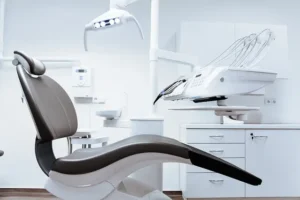
Rounding off: Dealing with dental trauma
Hopefully, this article has provided in-depth information on how you can personally deal with an incident of dental trauma. As one of the most common injuries among adults and children, dental injuries can be treated effectively if the proper measures are taken.
For further information about dealing with dental trauma, contact a dental professional. My Emergency Dental provides comprehensive emergency dental care and specializes in same-day dental treatment.
Call (470) 523-8118 for professional support, or visit our offices in Marietta and Stockbridge.
